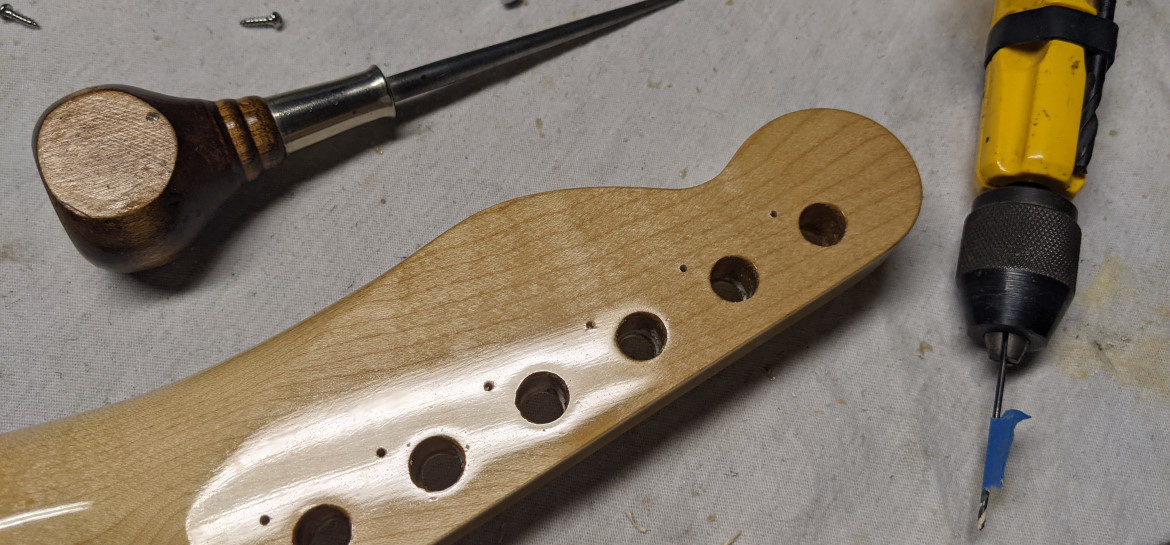
It has been a long, cold winter. We got a few days in the 60s and everyone was running around in short pants, but I’m pretty sure it snowed again yesterday. I think I’m deep in wintermania.
For a while there, it seemed like we were getting significant snow every few days, to the point where I actually lost a Christmas tree. I had taken it outside in January, but it wasn’t trash day, so I kind of just left it in the bushes with the intention of taking it to the curb when I took the bins out. But then it snowed, and the walkway to from where the trash cans live to the curb became a treacherous mess. Then it snowed again, and then it snowed some more, and I think some snow got shoveled on top of it when I broke down and finally attempted to remove the glacier from the trash path, and then suddenly it was March, and I found myself taking out the trash and wondering, “Wait, is that a severed pine tree? What the…ooooh.”
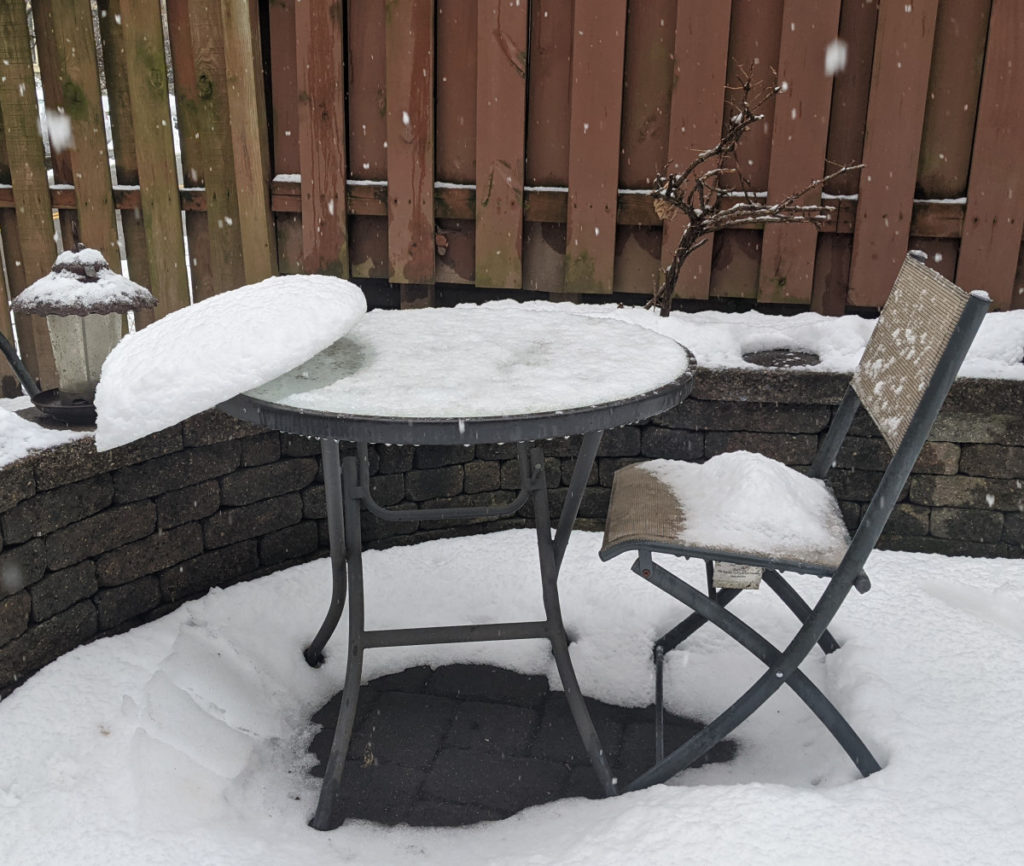
With a lack of sailing and a lack of, uh, anything else to do, I keep finding myself building or modifying musical instruments. I previously mentioned the ukulele and the bass guitar, but it just keeps happening.
I decided that I wanted to record something, and went to get my Tele. The Fender Telecaster was among the first electric guitars, or at least among the first commercially successful ones, and has become an absolute icon. Telecasters have made noise in just about every genre of music and are still in production today, barely changed since 1950(ish). Its relatively simple design and versatile sound made it a winner for Fender. I think their patents on the design expired (but not the trademark on the name) so now anyone can make one as long they just call it a “T-Style” or whatever. Mine is not a Fender, so I guess I shouldn’t call it a Telecaster (or a Tele, for short), but I’m not trying to sell anything, and among guitar nerds it’s practically become a genericized trademark for that style of guitar. I originally built mine from a kit.
I picked it up to record and immediately realized that the strings were shot, so I went straight to my workbench and started replacing them. Then I realized that I wasn’t ever really happy with the neck on that guitar. It had a maple fretboard, which has to be finished (unlike darker, more oily tropical woods commonly used in fretboards, like rosewood or ebony) and I didn’t particularly like the feel of it. The finish that I’d applied wasn’t really holding up that well either, since I don’t have the equipment to spray the traditional finishes, so I pulled the entire neck off and started making plans to put a new one on. With the neck off, I looked at the electronics, and realized that I was never really happy with those either, and like someone fidgeting with a clicky pen in a meeting, soon the guitar was broken down to its principal parts.
I knew that it was going to take weeks to get it back together, but I still had a slight interest in recording, so I grabbed my Strat. The Fender Stratocaster is one of the other most famous guitars of all time. It came out a few years after the Telecaster and has also been made continuously since then, and copied and tweaked in a million different ways. Buddy Holly played one, Jimi Hendrix set them on fire literally and metaphorically, Eric Clapton, David Gilmour, Stevie Ray Vaughan, Jeff Beck, Eddie Van Halen (kind of), Nile Rodgers, yadda yadda. It almost feels inappropriate to call mine my Strat. A friend bought it new in the mid-90s, and eventually gave it to me. It’s a real Fender Standard, made in Mexico in 1996. The thing with this one is that it’s left handed. I am not left handed, and although I switched the strings around and added a strap peg to the other horn, I still basically have to play it upside down which makes the ergonomics bonkers. Hendrix pulled it off (playing a righty left handed, in his case), but I’m no Hendrix.
As soon as I picked it up, I realized that the strings were shot and took it to my bench, which I’d already cleared of the Telecaster detritus. I removed the strings and realized that I didn’t like much about this guitar either. It was coated in a thick black polyester finish that I found boring and tactilely unpleasant.
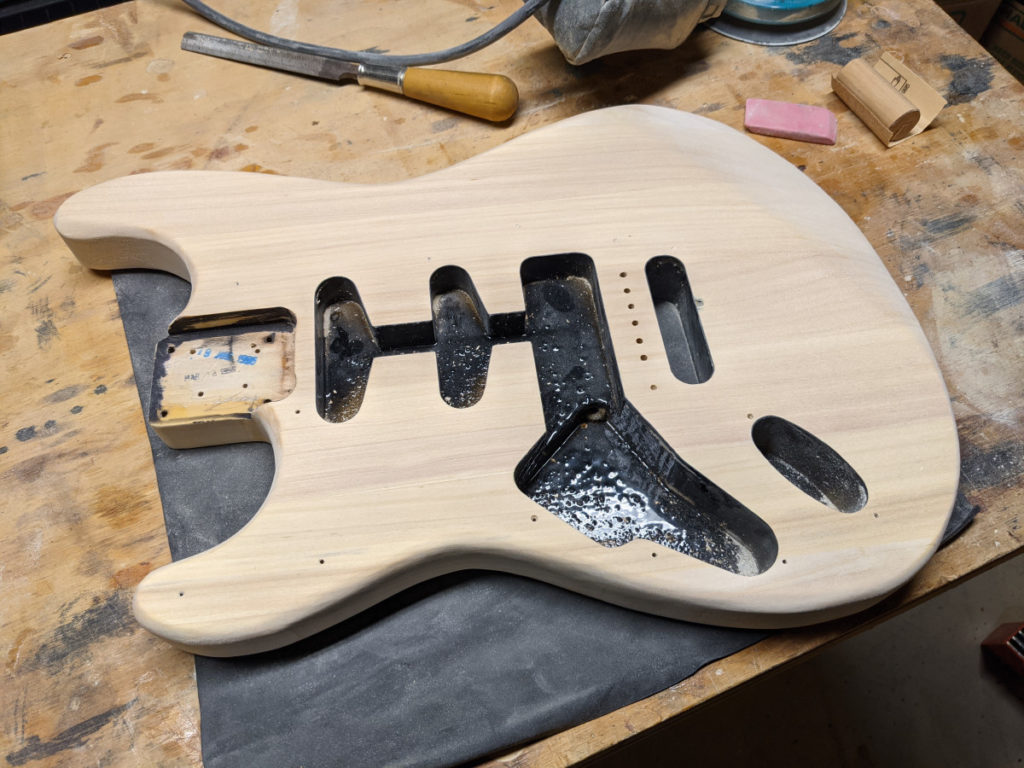
The next thing I knew, I was going after it with a heat gun and a putty knife, and had removed all of the finish. I also realized that the ceramic pickups would not be going back in, and that this was going to take weeks.
That left me with zero single-coil electrics with which to record. I broke out my Paul Reed Smith ripoff just to have something on the stand, but I mostly tried to occupy myself with completing these self-inflicted projects. A lot of it was just waiting for things to dry though, so to fill the gaps I decided to add a medium-sized quest to fix the flanger pedal that I broke maybe ten years ago.
I’ll try not to go too deep on this (is this a sailing blog?) but electric guitarists (et al.) often use effect pedals to modify their sound. One class of effect is something called “flanger,” which electronically simulates playing two reel-to-reel audio tapes of the exact same material, recording them combined to a third audio tape, and occasionally touching the flanges of the input reels in sequence to get them slightly in and out of sync, creating a sort of wooshy oscillating comb-filtered effect. I had an old Boss BF-2 Flanger, which is kind of the Toyota Corolla of flangers, with a broken resonance knob. I found the schematic and talked to several pedal geeks, and apparently nobody makes a 12mm 50k reverse-audio taper pot anymore.
While I was researching parts for that, I thought to myself, “You know what I need? Another project.” I have no idea. This is wintermania.
I got the parts to build a fuzz pedal. Fuzz is one of the oldest guitar effects. In 1961, a guy named Glenn Snoddy was recording Marty Robbins’ song Don’t Worry when one of the channels on the mixing board went haywire and made the baritone guitar in that mild country and western song sound like mid-90s grunge. They left it in. He shortly had people asking for that sound and couldn’t reproduce it with the board because by that point, the channel had completely melted down, but he set about making a device that would run a bunch of gemanium transistors into each other and completely overload them. He sold that circuit to Gibson Guitars, who marketed it in crazy ways, like claiming it would make your guitar sound like brass instruments (it does not), and they couldn’t sell them until Keith Richards mistakenly played it on Satisfaction, thinking that he was just putting scratch tracks down for a horn part to be recorded later. If this is at all interesting, Josh Scott from JHS Pedals just made a musical about it. Anyway, I put a pedal together based on another 60s fuzz called the Colorsound Fuzz Box, and actually brought a project to completion.
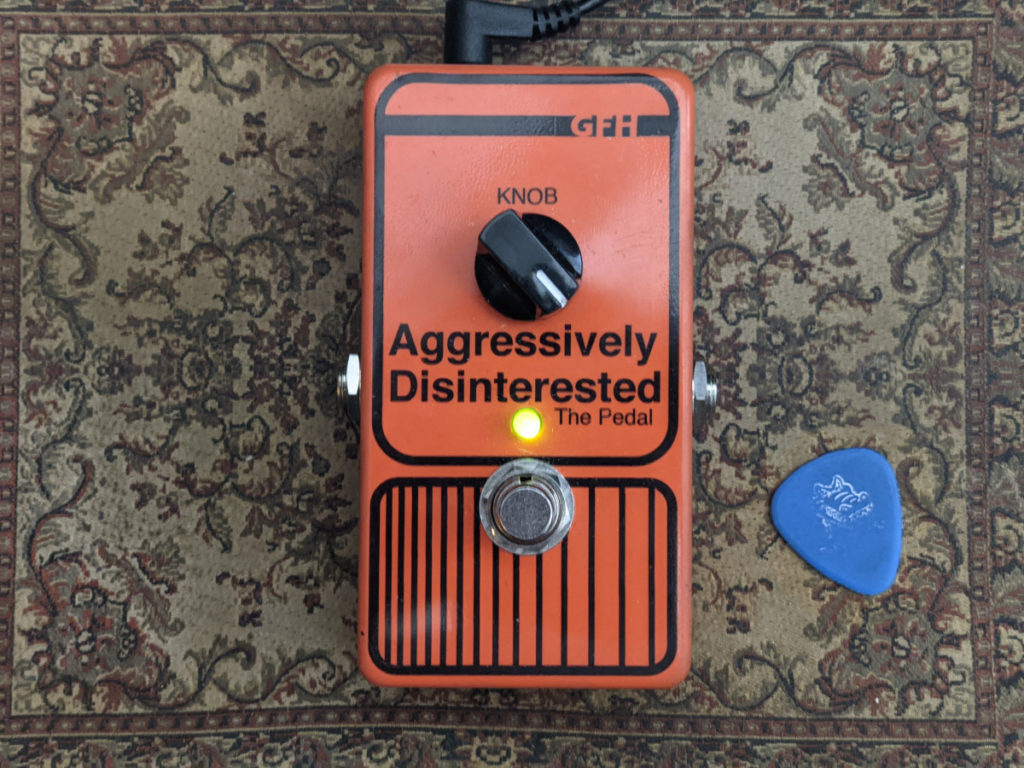
It has a crazy amount of fuzz.
By then, parts came in for my flanger. I tracked down a 9mm potentiometer that was technically smaller and meant to be soldered directly to a printed circuit board, but matched the original electronically and fit the case without modification. It was kind of a mess to solder within the physical confines of the pedal guts, but I got it working again. The original knob doesn’t fit it anymore, but whatever; the scars are real.
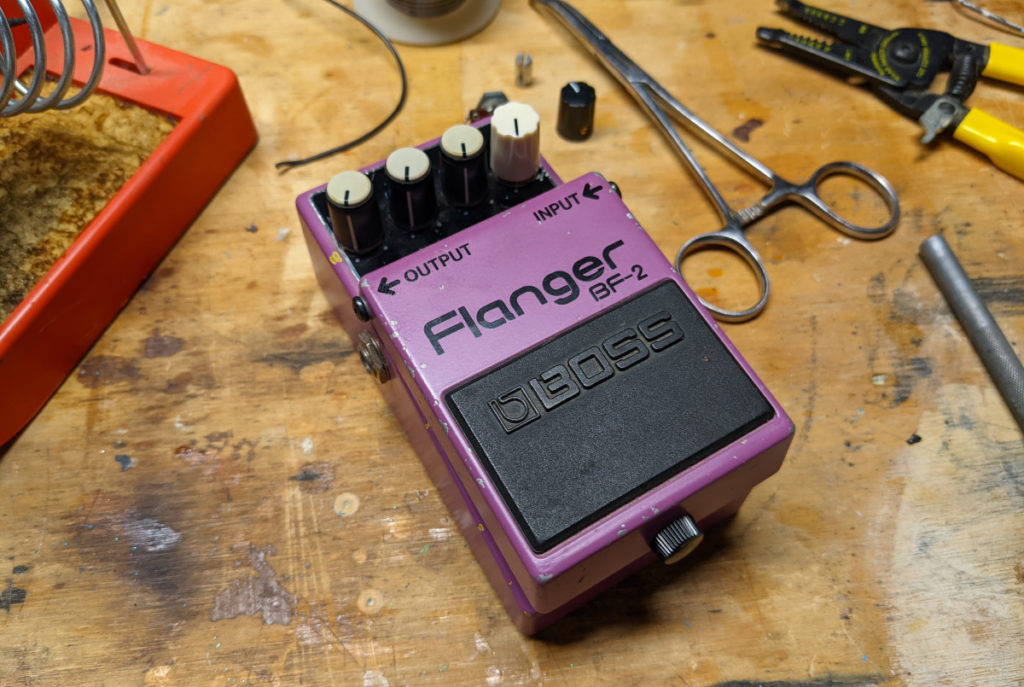
The guitar finishing proceeded slowly. The decal on the Tele neck kept getting messed up, and every time it happened it set me back days, but the whole point of doing this crap yourself is that you don’t have to live by anyone else’s standards but your own. I eventually got the neck finished and installed, now with a wenge fingerboard (which is also experimental for me, but certainly better than maple). I also replaced all of the electronics, most especially the pickups, and it all came back together pretty smoothly.
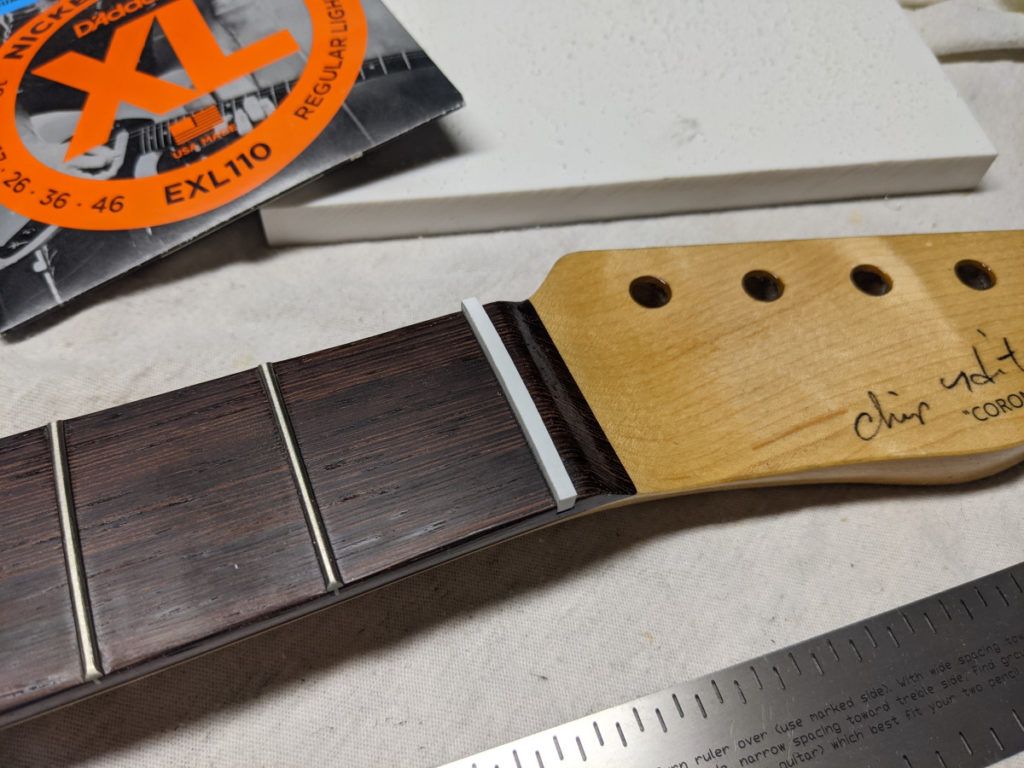
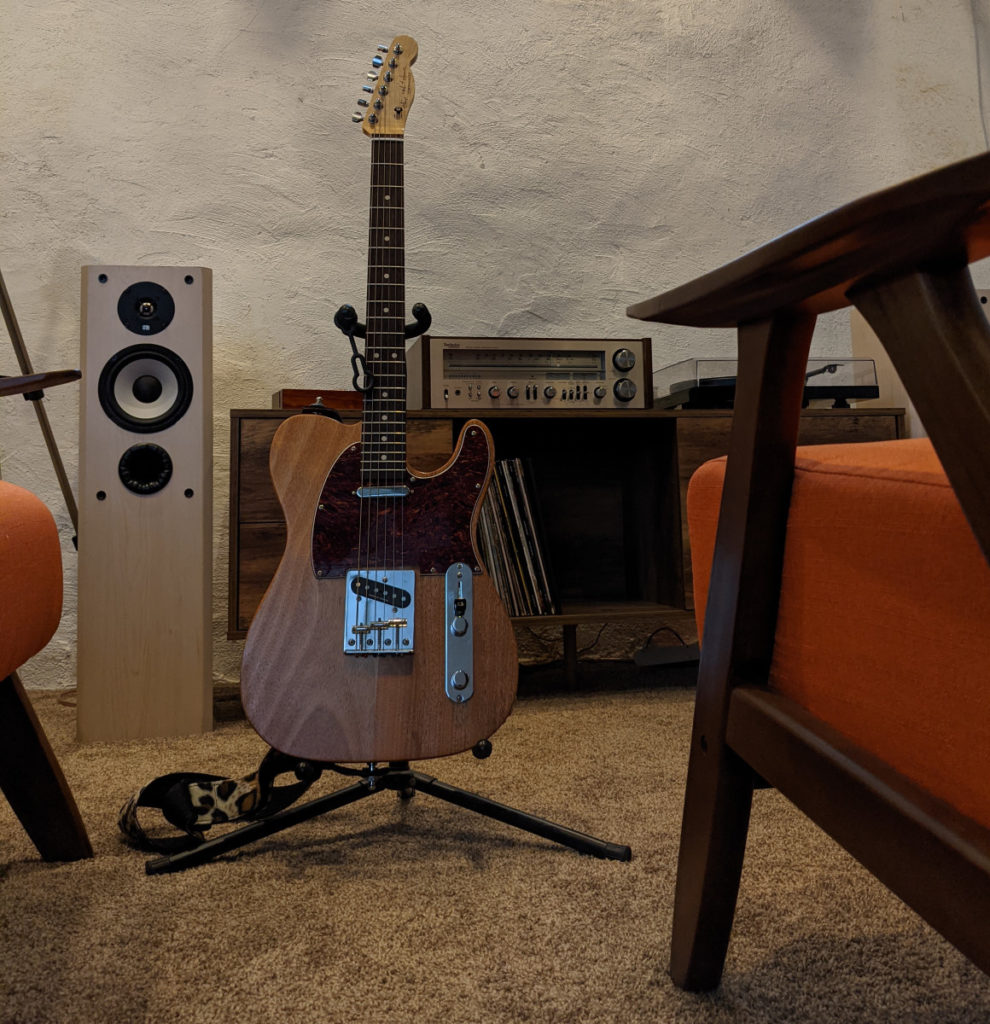
The Strat was the last piece to be completed. The folks at Fender likely always intended to have an opaque finish on this body, and it was therefore not made of the choicest cuts. It was actually made of several pieces of relatively unattractive wood glued together, so my initial attempts to dye it blue all failed. It was a blotchy mess, with each piece absorbing the dye differently, even with various seal coats and grain fillers (or at least it’s easier to blame the wood itself than my non-existent dyeing technique, since I’d never attempted it before). I then went with Plan B, which was putting another opaque finish on it, which I’ve also never done. All of the guitars I’ve ever made have been varnished with the grain left showing. The learning curve for painting was a little rough, and complicated by the fact that I also decided to use glitter? Wintermania sometimes requires a little sparkle.
In retrospect, glitter was probably not the best choice for a first paint job, and I wound up emptying can after can of clear coat onto it to bury the texture. I guesstimated that I’d need a week between cans for the lower layers to cure thoroughly or risk having them never cure, although that was based largely on various people yelling about paint on YouTube. In the end, I think my patience was rewarded.
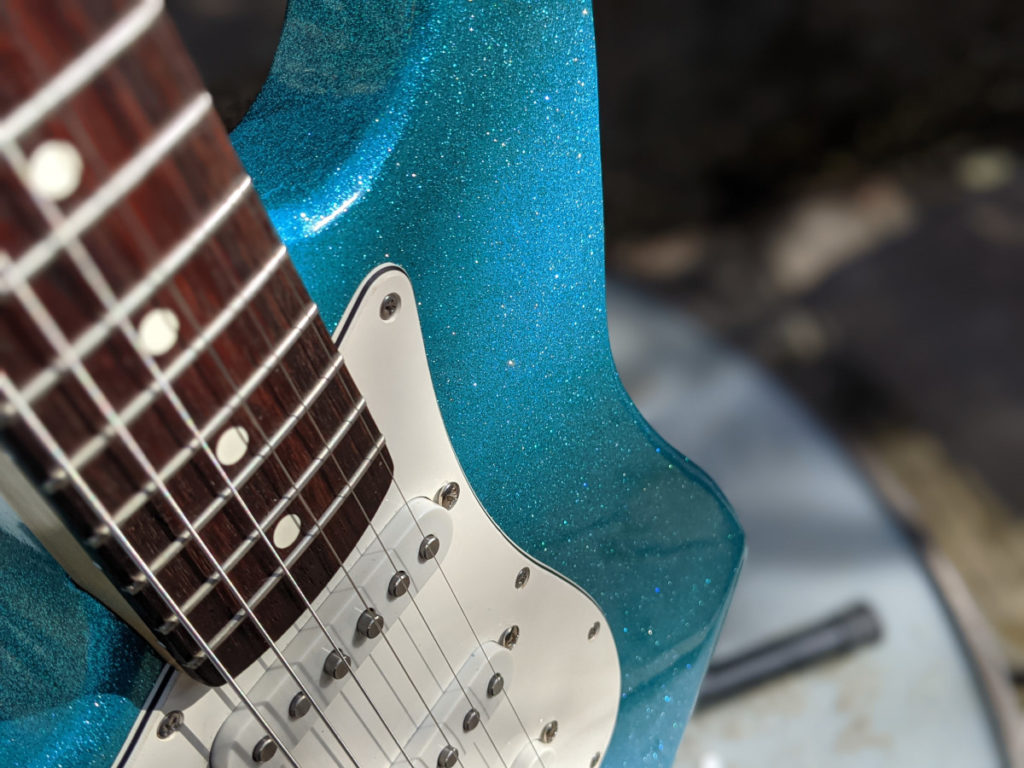
I also replaced the pickups and electronics on this, but the sparkle is perhaps the story here. After letting the last coat of clear dry for an excruciating 12 days, I wet sanded it with 800 → 1000 → 1200 → 1500 grit and then buffed it with compound and finishing polish intended for cars. It’s the shiniest thing I’ve ever messed with.
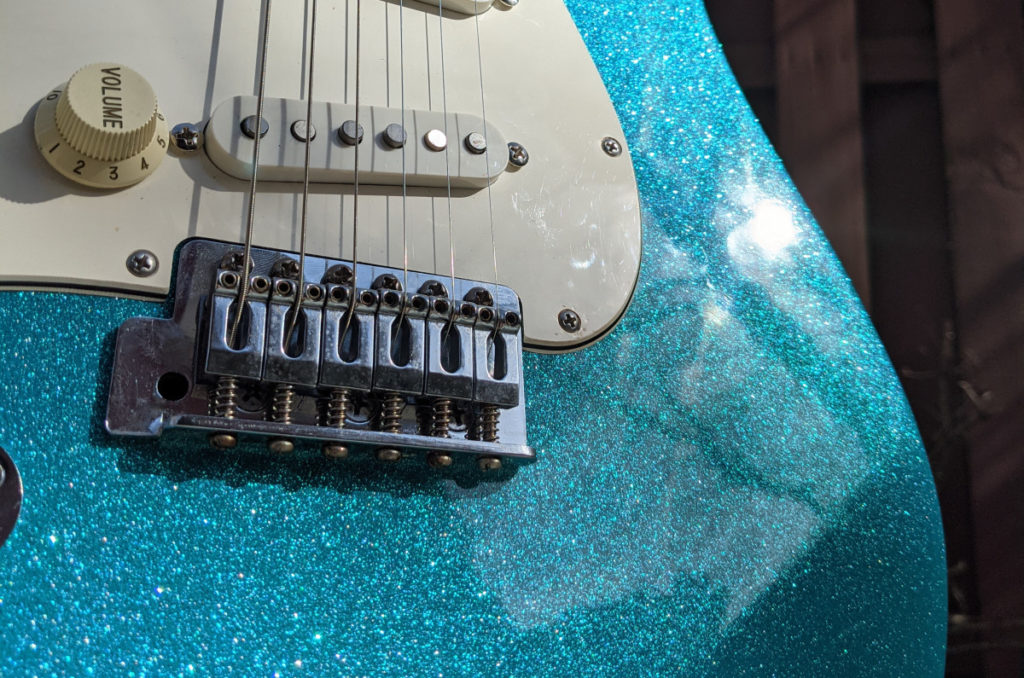
It’s probably not normal to take on this many simultaneous projects, and I recognize that I may be in the throes of wintermania, but there are also worse ways that I could have spent my time. It’s slowly getting warmer, and I’ll be able to start working on Fortuitous soon. I still need to refinish the tiller, which should be much easier than refinishing a guitar, assuming that I can resist the temptation to put more glitter on it than the pole at the Fantasy Showbar. Now if I can just get around to recording something…
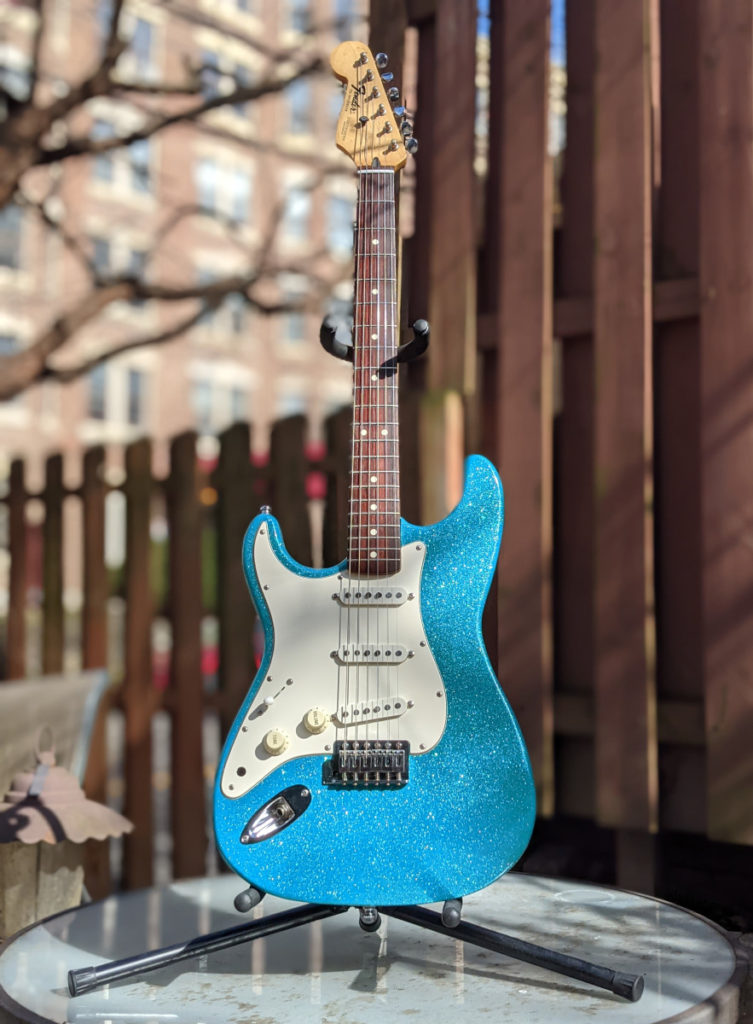
Ooooo! A glittery tiller! Now THAT would be the talk of the marina. Perhaps after that you could decoupage the cockpit seating?
lol. I hope I’m still a long way from that. 🙂